This morning, we went and watched Harry potter and the Half-Blood Prince. the film had many scientific and fantasty characteristics. Hopefully, in the near future, we could copy the movie magic and transfer it into reality.
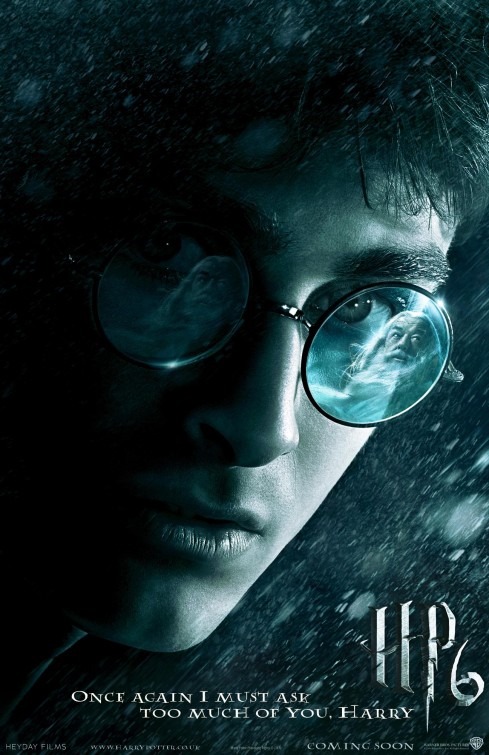
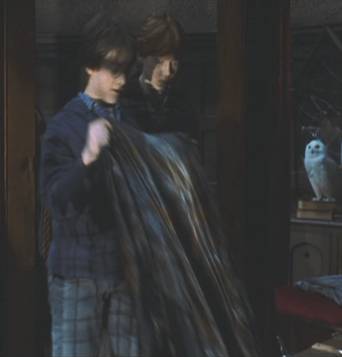 In all of the Harry Potter novels and films, Harry possesses a cloak that has the ability to make any person who wears it invisible. The invisible cloak has become more probable today because many scientists are trying to make ones now. At Duke University, students and scientists have tried to make this “invisible cloak”, however, it is still in the works and will not be finished until later. Also, in Japan, people have created cloaks that appear invsible but are not truly transulcent.
In all of the Harry Potter novels and films, Harry possesses a cloak that has the ability to make any person who wears it invisible. The invisible cloak has become more probable today because many scientists are trying to make ones now. At Duke University, students and scientists have tried to make this “invisible cloak”, however, it is still in the works and will not be finished until later. Also, in Japan, people have created cloaks that appear invsible but are not truly transulcent.
Another thing about Harry Potter are potions. Many of the potions that Harry Potter encounters in the franchise deal with extraordinary potions that can affect one’s emotions, make a p erson feel lucky, and change a person’s appearance. Also, there are fake ingredients in these “potions” like gillyweed and toad’s warts. However, these potions could be easily made in the future and even today. Since Potions class is very similar to chemistry, it seems that making potions that can affect any person. Love potions or anger potions are some possible potions able to be created. Although a person could make some of the potions in Harry potter, a person cannot make a potion to change a person’s looks.
erson feel lucky, and change a person’s appearance. Also, there are fake ingredients in these “potions” like gillyweed and toad’s warts. However, these potions could be easily made in the future and even today. Since Potions class is very similar to chemistry, it seems that making potions that can affect any person. Love potions or anger potions are some possible potions able to be created. Although a person could make some of the potions in Harry potter, a person cannot make a potion to change a person’s looks.
Harry Potter brings about science and art because first, movies are a form of artwork; seconds, movies have special effects that deal with science; lastly, the films have objects that could be made in the future.
http://harrypotter.warnerbros.com/harrypotterandthehalf-bloodprince/
http://dsc.discovery.com/news/2009/01/15/invisibility-cloak.html
http://en.wikipedia.org/wiki/Harry_potter#Films
http://magic-spells-and-potions.com/
http://www.howstuffworks.com/invisibility-cloak.htm
Today at the very beginning of the morning our group saw Harry Potter and the Half-Blooded Prince, who turned out to be a teacher at the Hogwartz School of Magic, which involved huge hallways and magic potion rooms. Harry was successfully able to create this potion out of actual modesty, even though his book had entire instructions written dedicated to fixing old, obsolete instructions that are invalid when performed on this exact substance. Making “Liquid Death” reminds me of nanoparticles made to eat whatever substances are around, which feed on flesh and blood. Also, today we were able to see a granular synthesis, when sounds cause a face to have very crazy effects and reactions, like teeth crunching down on the lips and then yelling at the top of the lungs. Also, what was found crazy was that this related to the crazy reaction of the zombies when the hand hit the water in the cave, which was when Dumbldor was drinking all the water necessary to create a potion and give the desired effect. Something that shocked me was that availability of zombies was so unlimited that they were even inside the water, keeping all necessities in interesting aspects. Also, we saw that genetically modified substances are infamous now, and some people still like using it even so, even though it is corrupt because they cause many problems and we can just decrease the population of the world by limiting births.



http://en.wikipedia.org/wiki/Genetic_engineering
http://www.rsrevision.com/Alevel/ethics/genetic_engineering/index.htm
http://www.greenpeace.org/international/campaigns/genetic-engineering
www.hp-lexicon.org/wizards/dumbledore.html
gallery.the-leaky-cauldron.org/
At 12:01, on 4/15/09 the Sci-Art Summer Course ventured to the large theater in Westwood to experience the magic of Harry Potter. Although the origin of the field trip was for entertainment, it wasn’t difficult to discern the science of the future hidden on the screen. Magic spells could easily be photon guns, and plasma weapons. Memory systems stored on micro, or even nano chips could represent the memories stored in vials. All aspects of Harry Potter may seem “old-fashioned” and behind modern technology; but, in theory the technology is far more advanced than our own, and could shape our future forever. An amazing defense/offensive system for the military could be a wand. Although it sounds cheesy and impossible, it could perform tasks unlike any other, and prove to be more versatile than any other weapon before it. And it doesnt only need to be utilized for killing; it could be used for medical applications, engineering, and possible even transportation.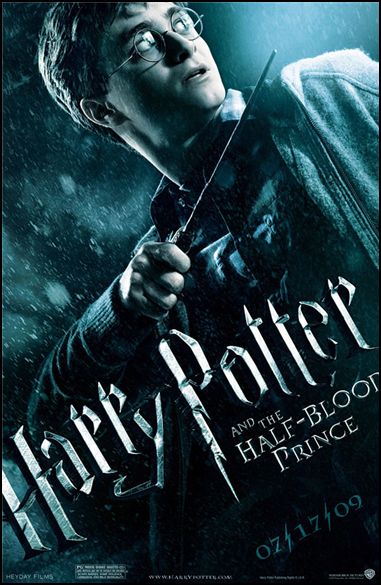
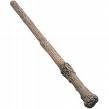
All in all, Harry Potter doesnt have to apply to every aspect of our lives, and definately doesn’t always have to be practical. But it is interesting to take ideas from a movie and apply them to our lives today. This example should help someone be able to recognize all the possibility in any movie they watch. And if this is a success, then who knows what possibilities the world could hold if we could only harness the imagination of HollyWood writers and physically create products. I would like to inspire everyone to look for innovation everywhere, cause you never know if you could discover the biggest technological advancement of the future.
http://en.wikipedia.org/wiki/Harry_Potter_and_the_Half-Blood_Prince
http://www.simonsingh.net/The_Science_of_Harry_Potter.html
http://innovationjournalists.blogspot.com/2008/09/movies-of-future.html
http://www.newscientist.com/article/dn13864-five-science-fiction-movies-that-get-the-science-right.html
http://totalscifionline.com/dreamwatch-archive/2513-harry-potter-and-the-prisoner-of-azkaban-practical-magic
Posted in Studnt Blog Group Y | Tagged Y |
Our first day of classes began with an introduction to microscopy. We discussed the various types of microscopes ranging from a scanning electron microscope (SEM) to transmitting electron microscopes (TES).  As part of this opening, we toured the basement levels of the California NanoSystems Institute building. We divided into three groups so as we could tour the three labs.
As part of this opening, we toured the basement levels of the California NanoSystems Institute building. We divided into three groups so as we could tour the three labs.
The first lab we touredmade use of the SEM microscope with the assistance of fluorescents. These colors are generated from a variety of ways including GFP and quantum dots. This is essential to visualize the incredibly small areas of the specimen. This lab was connected to the second lab toured, so we essentially just expounded from this topic.
The  second lab in our rotating lab visits allowed us to actually see the application of the specimens’ illumination by using colors. We were shown a sample that had different areas implanted by using colors. The sample used three colors (blue, green, and red) to display the use of the application of the work in the first lab.
second lab in our rotating lab visits allowed us to actually see the application of the specimens’ illumination by using colors. We were shown a sample that had different areas implanted by using colors. The sample used three colors (blue, green, and red) to display the use of the application of the work in the first lab.
The final lab we toured displayed another form of microscopy. This microscope was used by placing the sample within the large chamber which was coated with the foil to mantain temperature in the chamber. The lab included a  large amount of devices as well that enhanced the modern high-end microscope.
large amount of devices as well that enhanced the modern high-end microscope.
This rotating lab tour was a great way to begin the session. It taught us the basics of modern microscopy as well as gave us an idea of the high-tech science that is currently being explored. I believe this was pivotal in starting the session so as to let us encounter the concepts and the facility we would be spending out time with.
As part of today’s introduction, we discussed the importance of certain aspects of  science and determining whether or not it is considered dangerous. One side of the argument is that modern science and technology have amplified our lives. Many aspects of science have become intergrated with our lives in order to create a better place to live. An example of how this is so is how the human life expectancy has doubled due to modern medicine.
science and determining whether or not it is considered dangerous. One side of the argument is that modern science and technology have amplified our lives. Many aspects of science have become intergrated with our lives in order to create a better place to live. An example of how this is so is how the human life expectancy has doubled due to modern medicine.
But part of another argument, as we discussed in the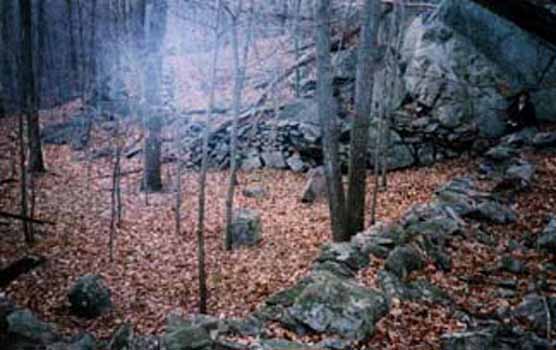 lecture, is that science essentially is the discovery of what nature has already provided us with. By trying to replicate nature, we are instead trying to control it. But what we as humans don’t understand is that harnessing nature has its consquences.
lecture, is that science essentially is the discovery of what nature has already provided us with. By trying to replicate nature, we are instead trying to control it. But what we as humans don’t understand is that harnessing nature has its consquences.
We also discussed that to determine the evils of technologies, one must decide if the benefits outweigh the costs. For example, cars are a major cause of death as well as an environmental hazard, but their importance to the transportation industry is far too great to regulate the usage of them.
I agree 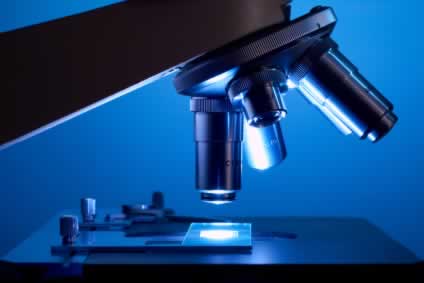 with the concept that determining the risk factor of any technology can only be determined by its significance and role in society, It would be unfair to deem that all modern technology is spiralling out of control unless it is compared to how important it’s function is. Technology is still an untapped resource, if you will, if we begin to stop experimentation at this point in time, we will never understand not only what we are capable of doing as humans, but also have power to understand nature.
with the concept that determining the risk factor of any technology can only be determined by its significance and role in society, It would be unfair to deem that all modern technology is spiralling out of control unless it is compared to how important it’s function is. Technology is still an untapped resource, if you will, if we begin to stop experimentation at this point in time, we will never understand not only what we are capable of doing as humans, but also have power to understand nature.
By adam | Published:
July 15, 2009
here are a couple infrared shots from the web cam john brought in… the trees are glowing because “chlorophyll in plants reflect[s] near infrared waves along with visible light waves” http://science.hq.nasa.gov/kids/imagers/ems/infrared.html
Last night we saw the midnight showing of Harry Potter and the Half Blood Prince. It seemed very fitting to see this movie because it encompasses everything this program is about; incorporating science and art.

Harry finds a school book that has new spells and ideas in it written by this “half blood prince.” He uses one spell on his enemy Malfoy. This incorporates science because of the effects to do these spells. The light that comes out of the wand could be generated by different nanoparticles. Also there are different things like opals that reflect light that can cause this to happen. Also quantum dots is another method that could be used to actually make this work.
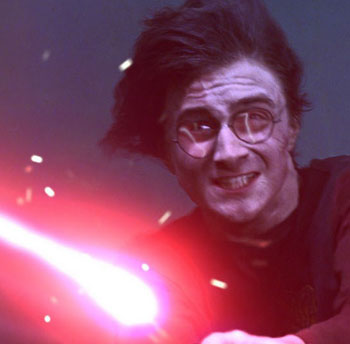
Also, with Harry’s invisible cloak nanotechnology could be used. Actually studies of creating an invisibility cloak are in process at the moment. This can be done manipulating the light by having the microscopic surface be much smaller than the wavelength of light being used.
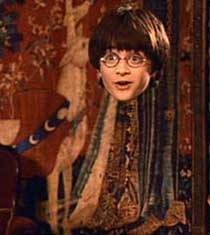
Harry and Dumbledore have to also fight off these zombie like creatures and Dumbledore saves them by creating a fire force around them. When they return Dumbledore is very weak and and Harry goes to get help and when he leaves Dumbledore is confronted by Malfoy and Snape. Snape whom Dumbledore had trusted ended up killing him.
The movie phenomenom of Harry Potter is able to incorporate both science and art to give an interesting persepective of film. The different effects used can be implemented into nanotechnology which is very interesting.
http://dsc.discovery.com/news/2009/01/15/invisibility-cloak.html
http://harrypotter.warnerbros.com/harrypotterandthehalf-bloodprince/
http://en.wikipedia.org/wiki/Opal
http://www.howstuffworks.com/invisibility-cloak.htm
http://en.wikipedia.org/wiki/Harry_Potter_and_the_Half-Blood_Prince
On Friday we presented our ideas for final projects. My group and I came up with the idea of using nanobots to treat hemophilia. How it would work would be that the nanobots would collect certain protiens in food to make factor 8. Then when the victim of disease got a cut the nanobot would be triggered and would release the factor 8 into the sytem. Hemophilia is a recessive genetic disorder so therefore it can still be passed down so it can not be cured as a whole.

What we found though is that this idea was not very original and various simialr experiments had been done before. Also, this idea did not really incorporate any art aspect so that is why we decided to change our project idea after we presented the orginal one.
Our new idea is creating an alternate reality for people. As we live in a world that is going into turmoil, there are many people who just want to get out and with our idea we give them that escape. How this mechanism would work is that certain nanobots would work certain parts of your brain to make a person see different things or make things disappear. Say a person a fear of public speaking they could trigger the nanobots in the brain to make all the people disappear.
There are more details to this idea being worked on but we changed this from the orginal idea because we felt that this showed more creativity and went along the lines of imagining the impossible.
http://en.wikipedia.org/wiki/Haemophilia
http://www.nhlbi.nih.gov/health/dci/Diseases/hemophilia/hemophilia_what.html
http://answers.google.com/answers/threadview/id/95932.html
http://www.enchantedlearning.com/subjects/anatomy/brain/label/lateralbrain/label.shtml
http://www.waiting.com/brainanatomy.html
On Saturday we went to the Getty Museum. One thing that i particularly enjoyed was seeing the paintings by Van Gogh. When I was younger my mom always showed me pictures of Van Gogh’s paintings and to actually see them in person was a new experience. Being able to see all the fine details of Van Gogh’s paintings was much different than just looking at a simple piece of paper in a book. Van Gogh is a impressionist which is and artist who emphasizes on light and uses visible brush strokes in their paintings. He produced more than 2,000 pieces, including around 900 paintings and 1,100 drawings and sketches.
My favorite painting by Van Gogh is the Irises. The colors that are used in this painting are so bright and vibrant and that is what sticks out to me the most. Out of all the paintings in the room, it is the one that caught my eye the most. The painting has strong outlines and unusual angles that makes it different from the other paintings by Van Gogh.
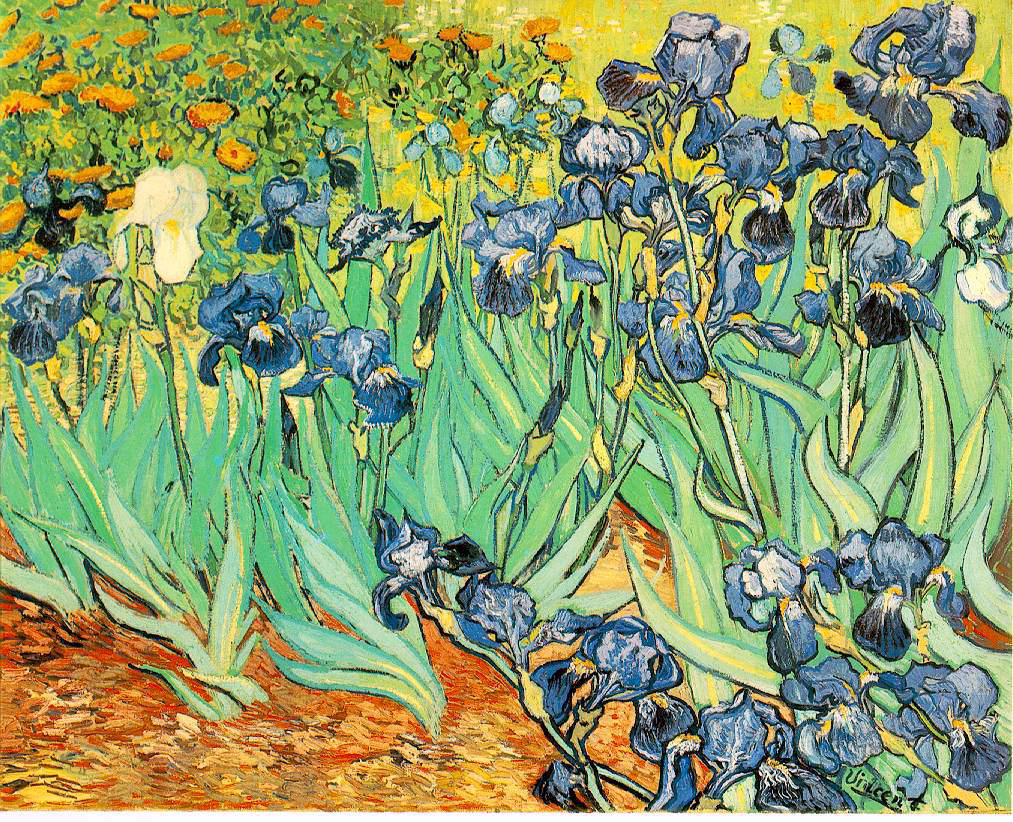
My visit to the Getty Museum was very eye opening and I really enjoyed seeing some art after so much time spent in science. Also, being able to see the original paintings by my favorite artist was really a great experience. Art is timeless and that is what I enjoy the most about it and that is what makes every visit to the Getty or any museum impactful.
http://en.wikipedia.org/wiki/Vincent_van_Gogh
http://en.wikipedia.org/wiki/Irises_(painting)
http://www.vangoghgallery.com/
http://www.getty.edu/art/gettyguide/artObjectDetails?artobj=947
http://www.ibiblio.org/wm/paint/auth/gogh/irises/
7-07-09 UCLA*- Nanobot technology can only be explored via the modern microscopes of today. We, today, were fortunate enough to learn about the three standard microscopes: the electron microscope, the light microscope, and the atomic force microscope. These tools are the necessities to ensuring a view of the nanobots which are at most a hundred millionths
The electron Microscope is the newest of the microscopes. It’s great because it uses the same concept of a normal light microscope however light at such high magnification is not ideal. So instead of its sensor capturing images by light it captures electrons which are beamed at the subject. And because such a intense amount of electrons can be shot at the subject they produce a very in-depth image with most of the properties light. The great thing about the electron microscopes is the magnification. Which is superior to any microscope of its class.
The light microscope is the standard of the class which was developed originally. It focuses light through a slide which can be florescent in case your sample is stained for certain light. And now with the amazing lens’s today manifactored by our camera companies truly like Carl Zies, Nikon, Minolta, ect we can see an extreme magnification through light microscopes as well. A nice feature that light microscopes include that electron microscopes won’t let you do is the water factor. Your sample in a light microscope can be wet. Not the same for a electron microscope. So these prove mch more usefll for sampling biological components.
The atomic force microscope was one that I’ve never heard of. It can be thought of “tracing” its subject giving a topographic map of a sort. It features a tip which is repulsed by the subject or attracted to the subject which then is converted to data. And it constantly gently taps the subject as it goes along tracing it at thousandths per second.
In all the microscopes today are more complex then they were just fifty years ago. Lens’s are incredible on the light microscopes letting us see very far into the common cell. Electron microscopes let us view into the places light can’t go. And last of all we now have the atomic microscope which and the atomic force microscope which is great because it doesn’t suffer from diffraction light like the common microscopes.
http://www.ruf.rice.edu/~bioslabs/methods/microscopy/microscopy.html
http://en.wikipedia.org/wiki/Optical_microscope
http://nobelprize.org/educational_games/physics/microscopes/tem/index.html
http://en.wikipedia.org/wiki/Atomic_force_microscope
http://www.nature.com/nature/journal/v62/n1598/abs/062154a0.html

 In all of the Harry Potter novels and films, Harry possesses a cloak that has the ability to make any person who wears it invisible. The invisible cloak has become more probable today because many scientists are trying to make ones now. At Duke University, students and scientists have tried to make this “invisible cloak”, however, it is still in the works and will not be finished until later. Also, in Japan, people have created cloaks that appear invsible but are not truly transulcent.
In all of the Harry Potter novels and films, Harry possesses a cloak that has the ability to make any person who wears it invisible. The invisible cloak has become more probable today because many scientists are trying to make ones now. At Duke University, students and scientists have tried to make this “invisible cloak”, however, it is still in the works and will not be finished until later. Also, in Japan, people have created cloaks that appear invsible but are not truly transulcent. erson feel lucky, and change a person’s appearance. Also, there are fake ingredients in these “potions” like gillyweed and toad’s warts. However, these potions could be easily made in the future and even today. Since Potions class is very similar to chemistry, it seems that making potions that can affect any person. Love potions or anger potions are some possible potions able to be created. Although a person could make some of the potions in Harry potter, a person cannot make a potion to change a person’s looks.
erson feel lucky, and change a person’s appearance. Also, there are fake ingredients in these “potions” like gillyweed and toad’s warts. However, these potions could be easily made in the future and even today. Since Potions class is very similar to chemistry, it seems that making potions that can affect any person. Love potions or anger potions are some possible potions able to be created. Although a person could make some of the potions in Harry potter, a person cannot make a potion to change a person’s looks.





 As part of this opening, we toured the basement levels of the
As part of this opening, we toured the basement levels of the  second lab in our rotating lab visits allowed us to actually see the application of the specimens’ illumination by using colors. We were shown a sample that had different areas implanted by using colors. The sample used three colors (blue, green, and red) to display the use of the application of the work in the first lab.
second lab in our rotating lab visits allowed us to actually see the application of the specimens’ illumination by using colors. We were shown a sample that had different areas implanted by using colors. The sample used three colors (blue, green, and red) to display the use of the application of the work in the first lab. large amount of devices as well that enhanced the modern high-end microscope.
large amount of devices as well that enhanced the modern high-end microscope. lecture, is that science essentially is the discovery of what nature has already provided us with. By trying to replicate nature, we are instead trying to control it. But what we as humans don’t understand is that harnessing nature has its consquences.
lecture, is that science essentially is the discovery of what nature has already provided us with. By trying to replicate nature, we are instead trying to control it. But what we as humans don’t understand is that harnessing nature has its consquences. with the concept that determining the risk factor of any technology can only be determined by its significance and role in society, It would be unfair to deem that all modern technology is spiralling out of control unless it is compared to how important it’s function is.
with the concept that determining the risk factor of any technology can only be determined by its significance and role in society, It would be unfair to deem that all modern technology is spiralling out of control unless it is compared to how important it’s function is. 





















